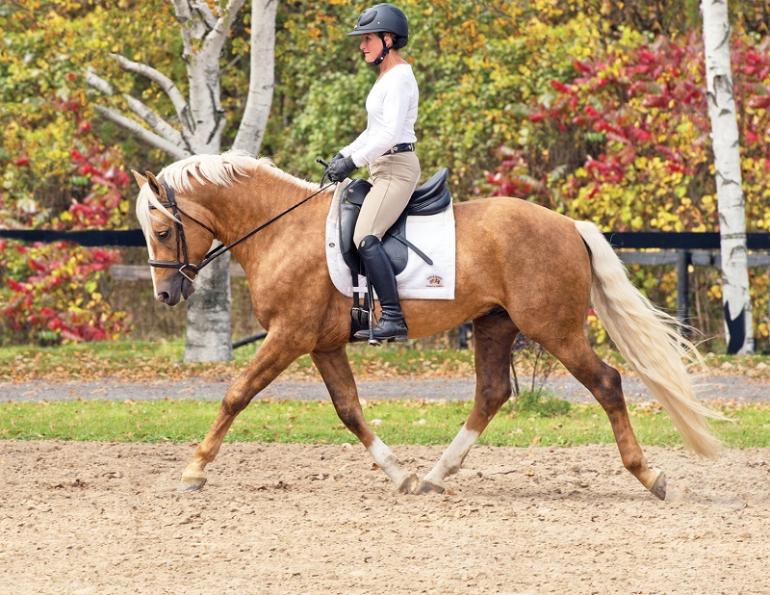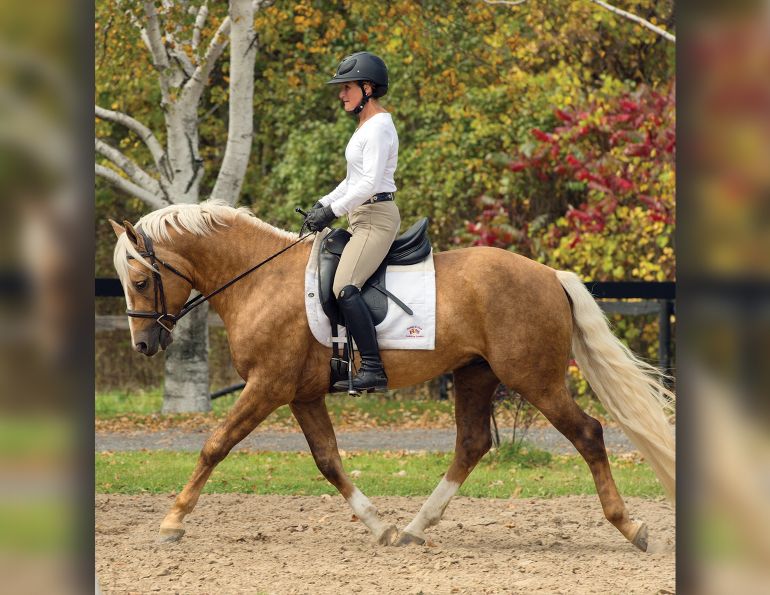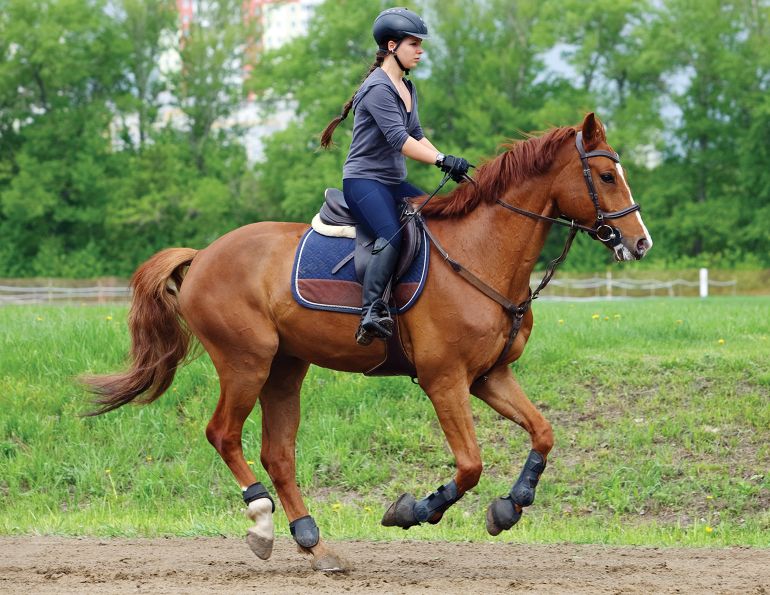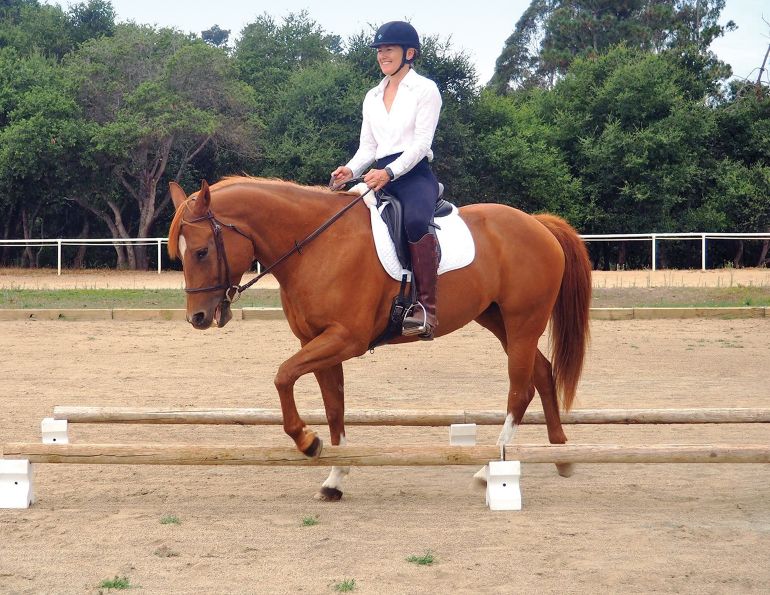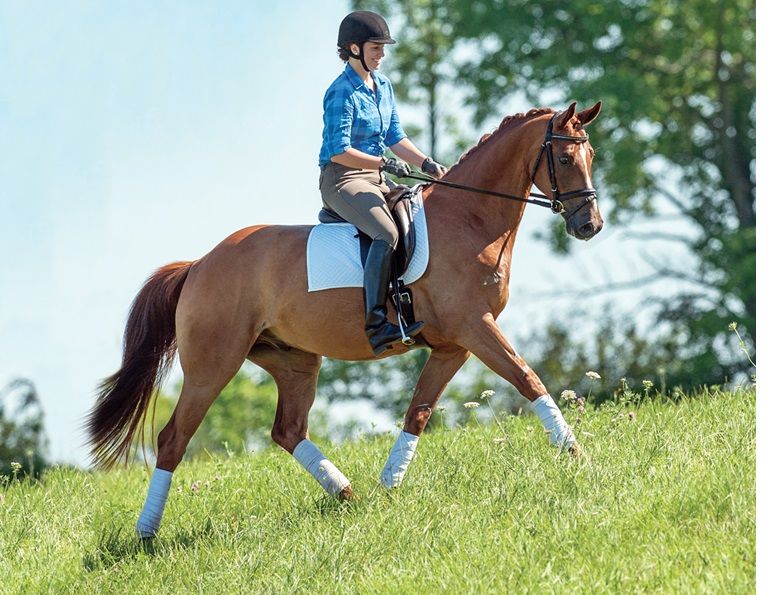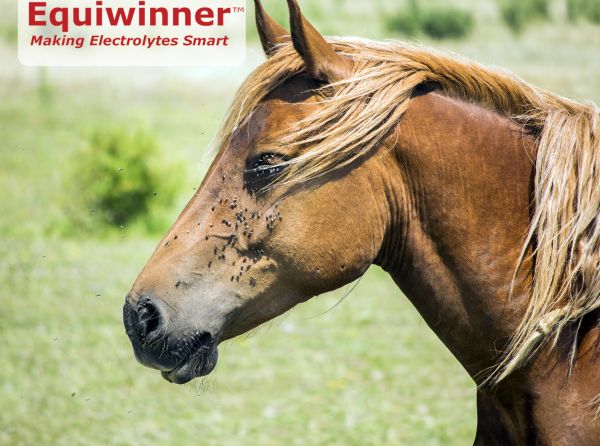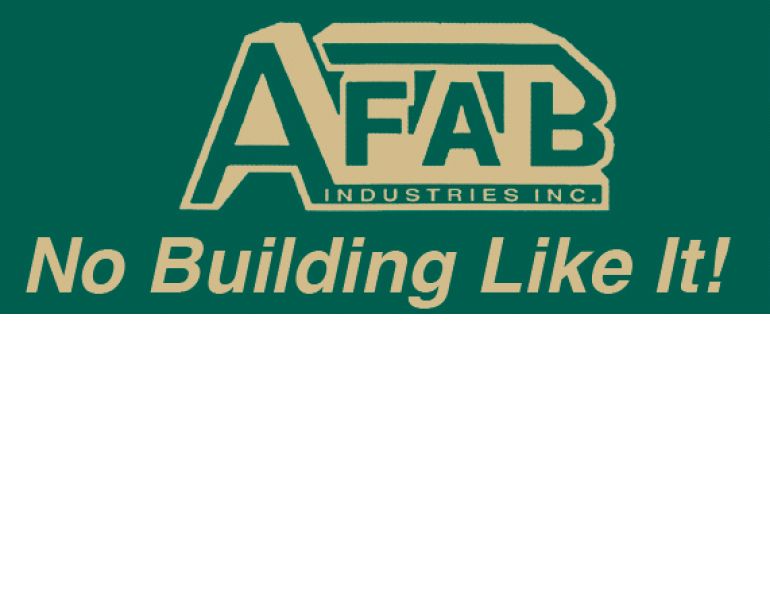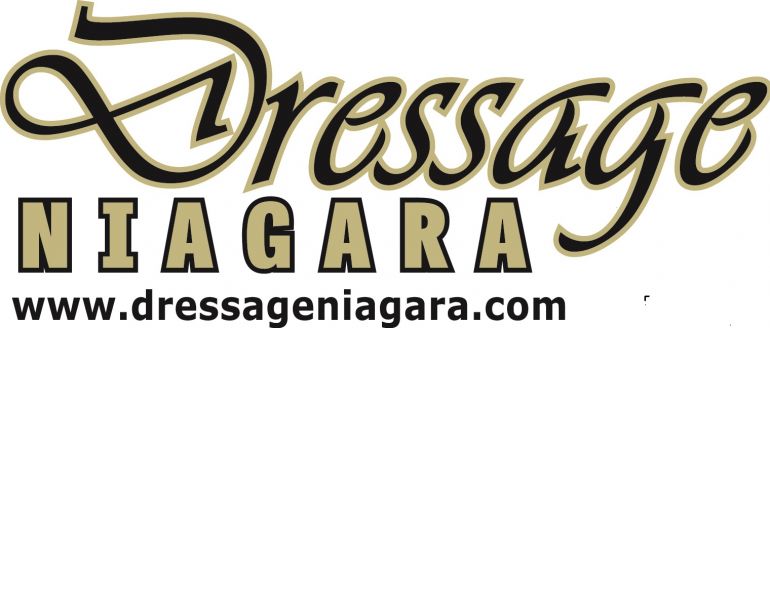By Jec A. Ballou
It is a simple enough goal: The more time a horse spends in the correct alignment and balance, the more firmly good habits form. But putting this into practice during our daily training is often not as straightforward as it seems. Much of the time, we set about performing the right exercises, but find ourselves not getting any closer to changing our horses’ poor postural habits. For better or worse, horses always get stronger somewhere when we ride them; our challenge is to ensure that strength is going to the areas that facilitate change and progress.
For instance, when a rider spends ten minutes trying to help a stiff horse bend his body on a circle but only achieves good results for two or three of those minutes, the horse has spent the remaining time adding strength to those areas in his body we are trying to change. This ratio works against our goals. When the horse spends more time getting stronger in ways we don’t want rather than in the ways we do want, progress becomes elusive.
How, then, do we ensure that our horses move more frequently in optimal patterns of muscle recruitment? Corrective exercises can significantly reduce the time spent using less-than-ideal muscle patterns. These deceptively simple maneuvers guide the horse, without mental or physical resistance, through the versions of bodily alignments we wish to make habitual. The ratio of time spent moving correctly and efficiently then shifts in our favour.

Corrective exercises help the horse to move correctly and to use optimal muscle patterns more frequently. Photo: Clix Photography
To draw on human analogy, you can think of them as the exercises a physical therapist would have you perform in order to use your body optimally in all aspects of your life. I call this prehab, because it prevents the need for rehab. Once you are using your body optimally within each exercise, the results soon carry over to your overall movement and mechanics. By working through a toolbox of exercises to establish good range of motion in joints, resolve muscle imbalances, and improve recruitment of core muscles, you create a new operating code for the neuromuscular system.
I recommend using three to five corrective exercises during each training session, preferably in the beginning before the horse is warmed up. This is an optimal time to prime up his neurosensory and neuro-motor systems, which govern his larger muscle recruitment.
Corrective exercises work for several reasons, but here are the primary ones:
- Reduce the percentage of time spent in unhelpful movement patterns, so that good habits become more the norm.
- Increase range of motion in joints, which in turn creates reflexive “releases” and looseness through the horse system-wide.
- Recruit postural muscles, often referred to as core muscles. This recruitment allows the limbs to move more freely, resulting in engagement.
- Develop new postural habits with minimal confusion, tension, or anxiety in the horse.
What counts as a corrective exercise? Pretty much any exercise that necessitates finely controlled motor skills and organizes the body in specific balance can be effective. These exercises are best performed slowly but with the horse attentive, not sluggish.
Here are two of my favorites that are useful for all performance horses:
Raised Pole Fan with Alternating Strides
Switch between the extensor and flexor muscle chains with the footwork required in this pole arrangement for increased symmetry body-wide. It targets the thoracic sling, stifle muscles, and pelvic stability. This exercise should feel like taking your horse back and forth from a finely controlled collected walk to a big extended walk.
1. With the inside edge of the poles raised to a height of 12-16 inches, set up four to six poles in a fan shape as shown. Space the raised inside ends of the poles approximately one foot apart; set the wider ends four-and-a-half feet apart.
2. Begin by riding around the raised ends of the poles at a walk. Ask your horse to take just a single step between each pole (Figure 1).
Related: What is Contact? And Do Riders Really Need It?
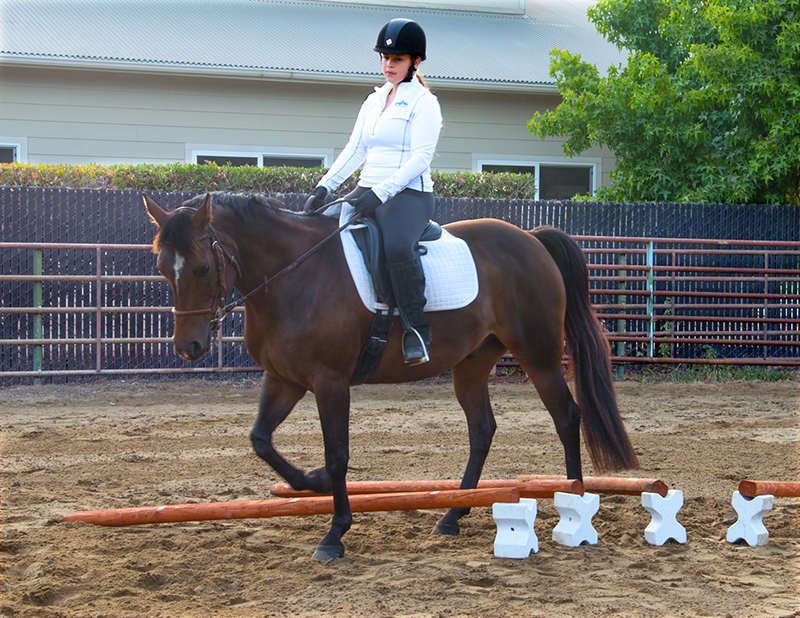
Figure 1. Photo: Jec A. Ballou
3. Maintain a clear bend to the inside of your arc.
4. Circle around to cross the poles again, but now move over to the wider ends of the pole fan.
5. Ask for two steps between each pole, which will require your horse to really extend his stride (Figure 2).
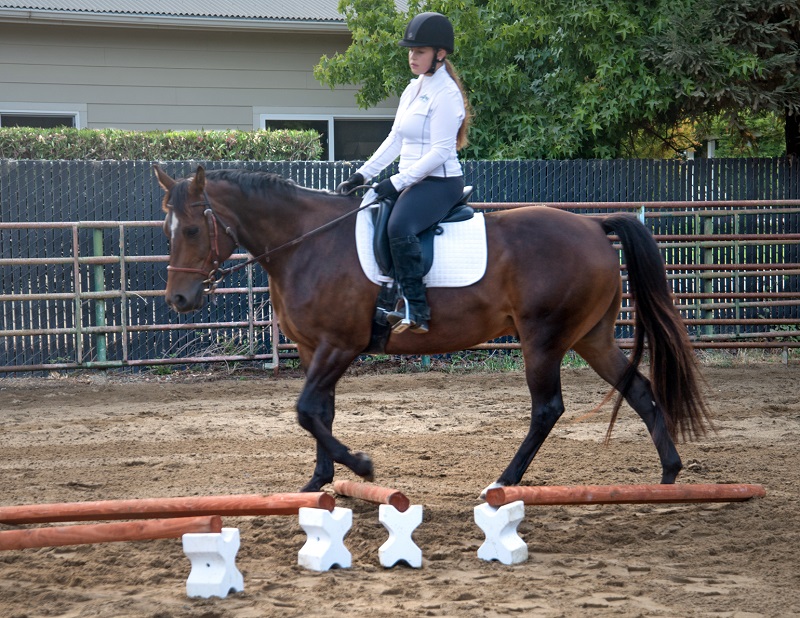
1. Set up four or five poles on the ground spaced at a distance of approximately three feet from each other.
2. About 40 feet ahead of these poles, set up four or five more poles spaced two-and-a-half feet apart and raised eight inches off the ground on riser blocks.
3. Either leading or riding, ask your horse to walk a straight line over both sets of poles and adjust his stride to do so.
4.When crossing the poles with wider spacing, ask the horse to extend his strides so that he takes just a single step between each pole.
5. As you approach the narrow, raised poles, ask the horse to collect and shorten his strides. He should take short, but high and lively steps.
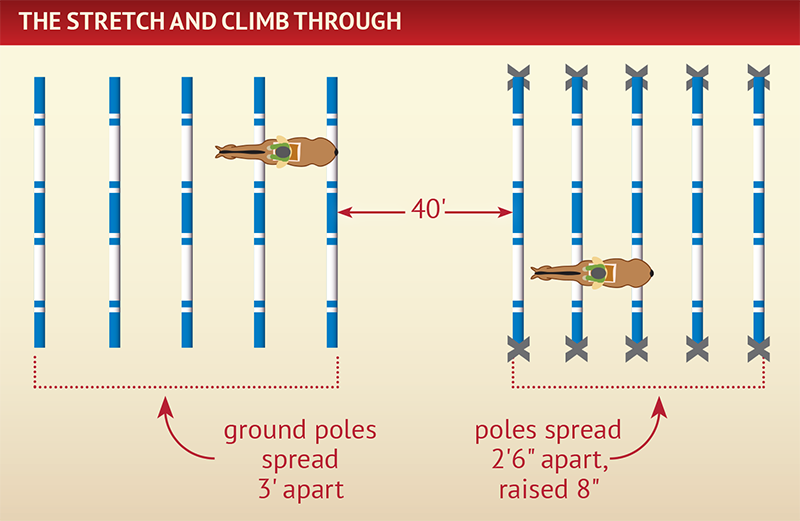
By using exercises like these, you can program your horse with precisely the alignment and balance you might otherwise only achieve in fleeting moments during a ride. The more often you show the horse’s body what you want with exercises like these, the more he adopts it as his preferred way-of-going. Corrective exercises are little movements with big results. They often yield faster and more measurable progress than the sweaty, heart-beating workouts we undertake with the hopes of changing muscular habits. By spending five minutes at the beginning of a ride working through corrective exercises, you are bound to reach your goals quicker and easier.
Related: Conditioning Horses: Stability Before Strength
Related: Equine Physiology and Fitness
To read more of Jec Ballou's articles on this site, click here.
Main photo: Clix Photography



